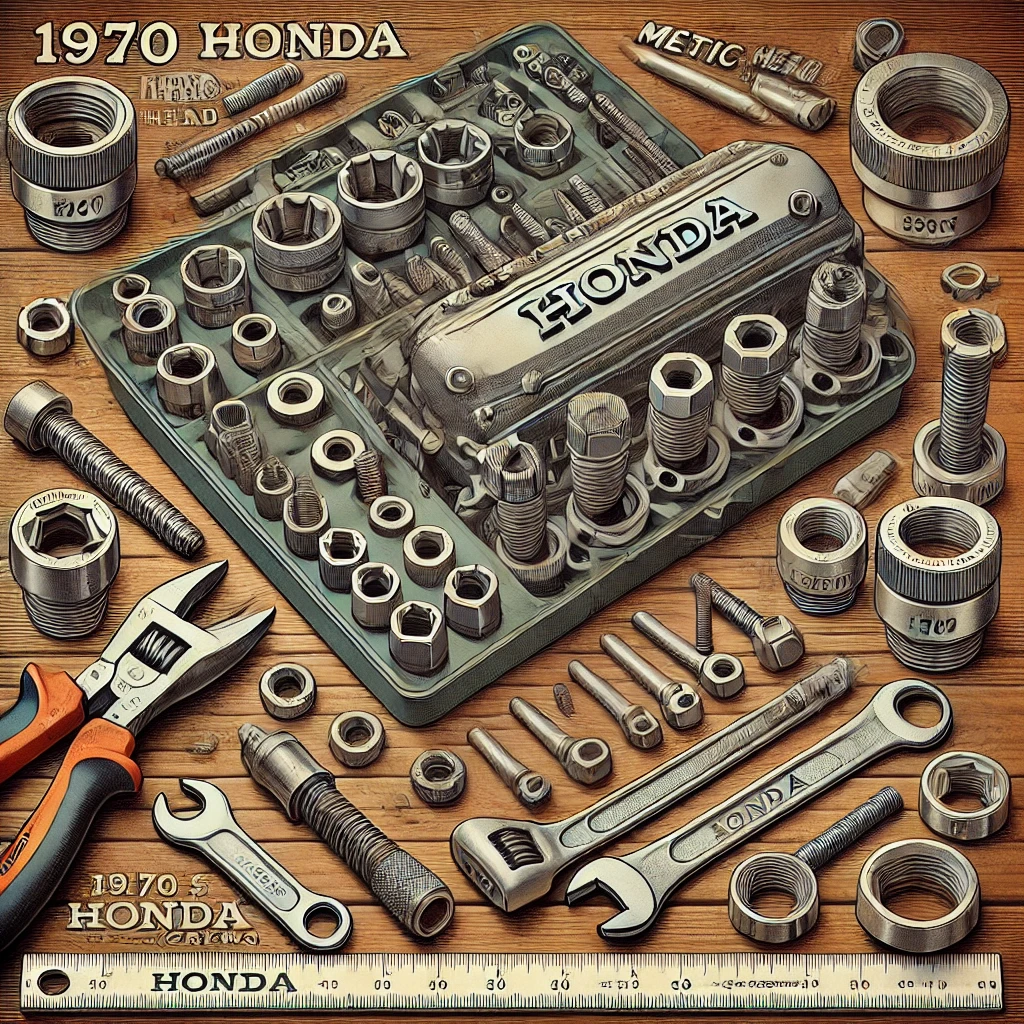Can You Convert 1970 Honda Phillips Head to Metric Head: Upgrading Your Classic Ride
Introduction to Can You Convert 1970 Honda Phillips Head to Metric Head
When dealing with classic vehicles like the 1970 Honda, maintaining or restoring them with original parts can be a challenge, especially concerning hardware like screws. Phillips head screws, common in vehicles of that era, are less compatible with modern tools which are predominantly metric. This article explores the feasibility and detailed process of converting these traditional Can You Convert 1970 Honda Phillips Head to Metric Head, enhancing tool compatibility and ease of maintenance.
Understanding the Can You Convert 1970 Honda Phillips Head to Metric Head
A 1970 Honda typically comes with Phillips head screws, which were widely used in automotive assembly during that era. The Phillips head design, characterized by its cross-shaped slot, was originally developed to provide better engagement with the screwdriver, reducing slippage and damage. However, with the global shift towards standardization, metric heads, particularly those with hex or Torx patterns, have become more prevalent due to their superior torque and less likelihood to strip under heavy use.
Key Features of the Can You Convert 1970 Honda Phillips Head to Metric Head
The Screw Head Dilemma: The primary challenge is the incompatibility between the Phillips screws and metric tools, which are more common in today’s toolkits. The screws on the 1970 Honda might also be worn or rusted, making them difficult to remove without damaging the head.
The Transformation Action Step-by-Step:
- Assessment: Inspect the existing screws for wear and determine the correct metric replacements.
- Removal: Carefully remove the old Phillips screws, using penetrating oil if necessary to ease the process.
- Selection of Metric Screws: Choose high-quality metric screws that match the diameter and length of the original screws but offer a more robust head design.
- Installation: Use appropriate metric tools to install the new screws, applying anti-seize compound to prevent future corrosion.
Professional and Negatives of the Conversion:
- Improved Tool Compatibility: Converting to metric screws allows the use of modern tools, which are generally more durable and provide better torque management.
- Enhanced Durability and Maintenance: Metric heads tend to be more robust and are less likely to strip, making them ideal for vehicles that require frequent maintenance.
- Availability: Metric screws are more readily available, making replacements easier and potentially cheaper.
Cons:
- Potential for Historical Inaccuracy: For purists and collectors, modifying a classic 1970 Honda with non-original parts might diminish its authenticity and historical value.
- Risk of Damage: Improper conversion techniques can lead to damaged screw heads or threads, potentially causing more serious issues down the line.
- Cost: While individual screws are not expensive, the cost can add up if professional assistance is needed for the conversion.
Advantages and Disadvantages of the Conversion
Advantages:
- Better Tool Engagement: Metric screws typically allow for better engagement with tools, reducing the risk of stripping.
- Increased Durability: Metric heads are often more robust than Phillips heads, providing a longer lifespan.
Disadvantages:
- Loss of Authenticity: For purists, altering the original hardware of a classic Honda might detract from its historical value.
- Technical Challenges: The conversion requires precision to avoid cross-threading or misalignment, which could damage the hardware.
Alternatives to Full Conversion
For those hesitant to fully commit to converting every screw, consider replacing only those that are most worn or frequently manipulated. This approach preserves more of the vehicle’s original character while still enhancing functionality where it is most needed.
Tips for Undertaking the Conversion
Proper Assessment: Thoroughly evaluate which screws need replacement and whether a full conversion is necessary or if selective replacement suffices.
Choosing the Right Materials: Opt for high-quality metric screws that can withstand the rigors of engine vibrations and temperature variations.
Using the Correct Tools: Ensure you have a complete set of metric tools, including sockets, wrenches, and possibly a torque wrench for precise installation.
Seek Professional Advice: If unsure, consult with a professional mechanic who specializes in classic vehicles to avoid costly mistakes.
Document Everything: Keep detailed records of the original parts and the conversion process, which can be invaluable for future maintenance or restoration.
Conclusion
Converting the screw heads on a 1970 Honda from Phillips to metric can be a worthwhile endeavor, particularly for those who regularly maintain or restore their classic vehicles. This conversion not only facilitates easier maintenance but also ensures greater availability of replacement parts. However, it requires careful consideration of the impact on the vehicle’s authenticity and integrity. With the right approach and tools, this conversion can significantly enhance the functionality and longevity of your 1970 Honda, balancing modern efficiency with classic charm.
FAQS
1.What tools do I need for converting Phillips screws to metric on a 1970 Honda?
You’ll need metric sockets, wrenches, and possibly a torque wrench.
2.Does changing to metric screws affect the resale value of a 1970 Honda?
It might, particularly if the vehicle is considered a collector’s item where originality is prized.
3.Where can I find metric screws suitable for a 1970 Honda?
Most hardware and automotive parts stores will stock a variety of metric screws that are suitable.
4.How do I choose the right metric screws for my 1970 Honda?
Match the diameter and length of the original Phillips screws and opt for high-quality, corrosion-resistant materials.
5.Can I convert the screws back to Phillips if I change my mind?
Yes, you can revert to Phillips screws, especially if you keep the original screws or obtain authentic replacements.






Post Comment